Bathrooms get messy fast—soap scum, moldy corners, drain odors, and yes, those stubborn rust stains in the shower. The good news? You don’t need to spend all day scrubbing. Just follow this smart method: divide your bathroom into 9 key zones, follow the dry/wet rule, and clean at three levels of frequency (daily, weekly, and monthly).
From how to get rust off the shower wall to a full-blown ceiling-to-floor reset, this is your go-to guide to make your bathroom shine again—minus the stress.
🧭 Step 1: Know Your Zones and Cleaning Rhythm
Dry zones: toilet, mirror, cabinets, handles
Wet zones: shower, bathtub, floor drains
Add the “three-frequency” rule to the mix:
- High-frequency: quick daily routines (e.g., squeegeeing glass after showering)
- Mid-frequency: weekly jobs like cleaning toilets or tackling rust on shower caddies
- Low-frequency: monthly deep cleans to eliminate mold, hard water scale, and rust stains shower floors just can’t shake
Below are the cleaning focus points, recommended tools, and cleaners for the
9 key battlefields of bathroom cleaning:
| Area | Key Dirt | Tools & Cleaners |
|---|---|---|
| Ceiling & Wall Tiles | Mold, soap scum, vapor | Long brush + bathroom cleaner or 1:1 white-vinegar water |
| Mirror & Glass | Limescale, fog | Glass spray or vinegar-water + newspaper or microfiber cloth |
| Faucet & Showerhead | Limescale, low flow | Citric-acid soak, soft toothbrush, wrench |
| Sink & Counter | Soap scum, yellowing | Neutral cleaner or toothpaste + sponge |
| Toilet | Urine scale, germs | Toilet brush + bowl cleaner or vinegar + baking soda |
| Tub/Shower Base | Stubborn scale, slippery film | Baking-soda paste + vinegar, soft brush |
| Drain & Floor Trap | Hair, odor | Tweezers + wire ball + drain cleaner or baking-soda + vinegar |
| Floor & Corners | Mold, stains | Floor brush + diluted bleach or all-purpose scrub |
| Cabinet & Hardware | Musty smell, water marks | Neutral cleaner, dry cloth, furniture wax |
🚿 Step 2: 9 Cleaning Zones—Now With Rust Fixes
1. Ceilings & Walls
Low-frequency: Mold loves tile grout and ceiling corners. Dry brush first, then spray 1:1 white vinegar and water. Let sit 5 minutes before scrubbing.
Add a grout sealer afterward to block future buildup.
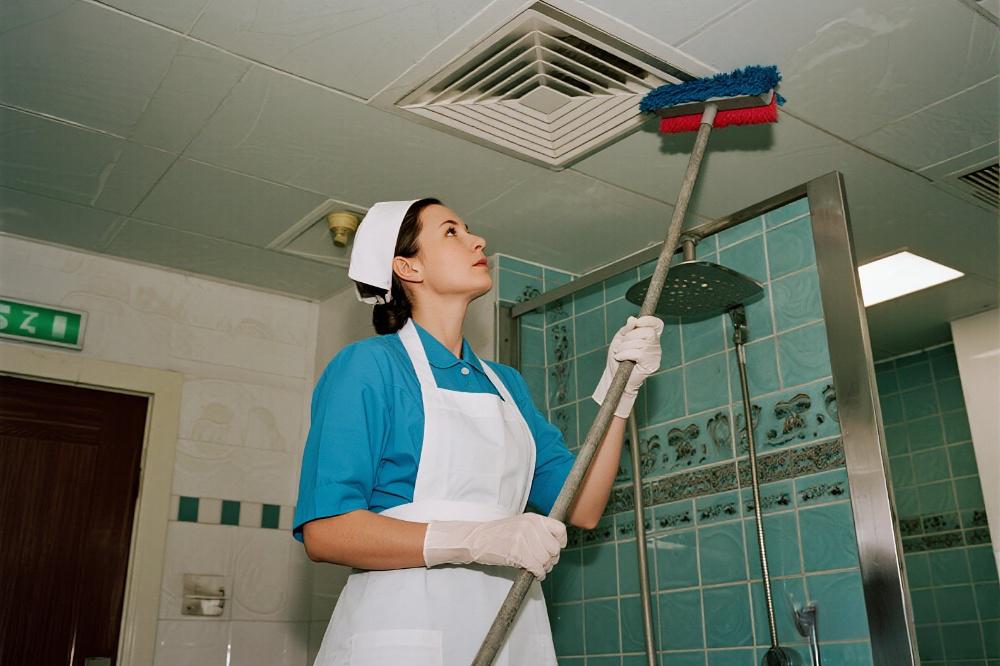
2. Mirrors & Shower Glass
Mid-frequency: Remove fog and water stains with glass cleaner or vinegar mix. Wipe with microfiber cloth or old newspaper.
High-frequency: Use a squeegee after every shower to reduce buildup—and shower rust from excess moisture.
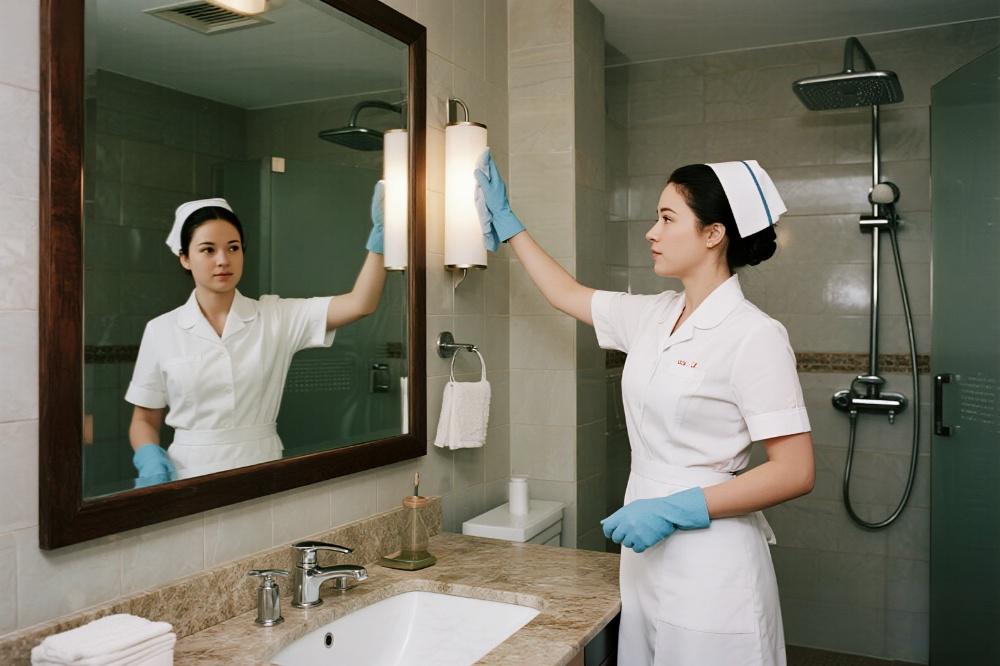
3. Faucets, Showerheads & Rods
Mid-frequency: To remove water and rust stains from the showerhead, soak it in warm water with citric acid.
How to clean rust off shower rods: Wipe with a paste of baking soda and vinegar. Scrub gently with a soft sponge or cloth.
High-frequency: After wiping counters, run a cloth over taps and rods to prevent mineral and rust buildup.
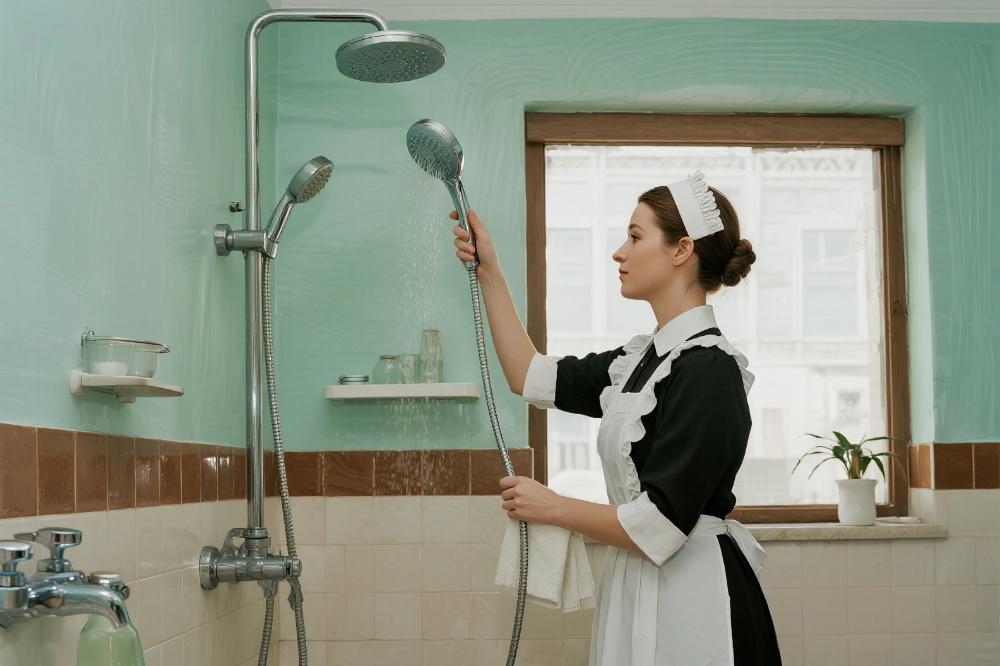
4. Sink & Countertops
Mid-frequency: Scrub with mild cleaner or toothpaste in circles. For yellow stains or early rust on metal edges, let the cleaner sit for 5 minutes before wiping dry.
High-frequency: Wipe down after every use to prevent buildup and oxidation.

5. Toilet
High-frequency: Wipe lid, seat, and handle daily with disinfectant wipes.
Mid-frequency: Spray toilet bowl cleaner or vinegar inside, let sit 10 minutes, then scrub.
Low-frequency: Drop in a citric acid tablet to prevent hard scale and rust stains in the tank.
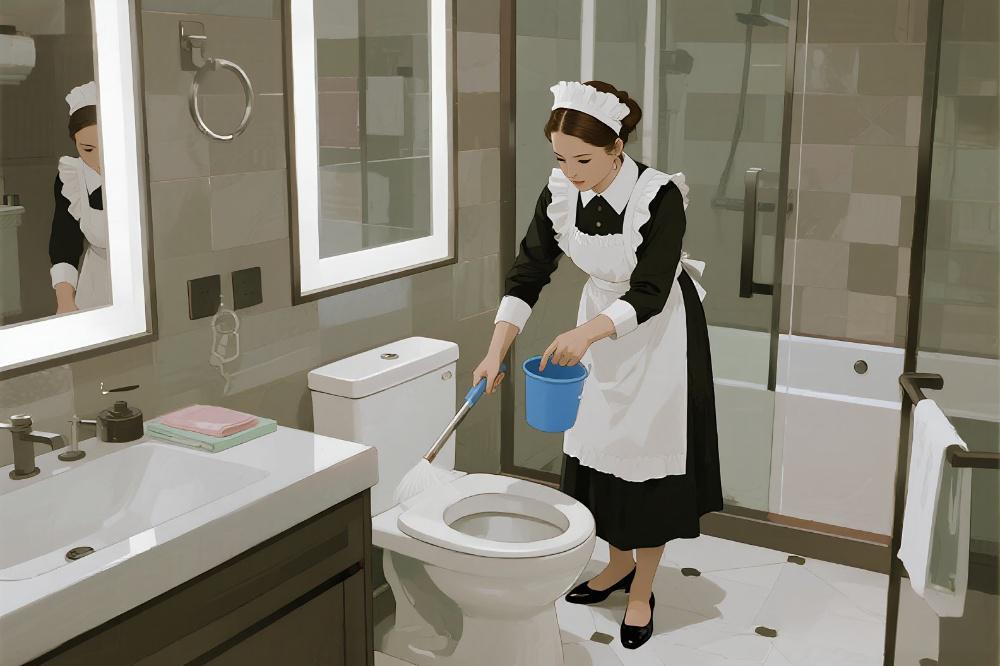
6. Bathtub & Shower Floor
Mid-frequency: The slimy feel underfoot is soap and oil buildup. Mix baking soda and water into a paste, let sit for 20 minutes, then scrub.
How to remove rust from the shower floor: Use a shower rust cleaner (or lemon + baking soda paste), let it soak into rusty spots, scrub gently, and rinse well.
High-frequency: Rinse floors after each use to stop soap scum and rust deposits.
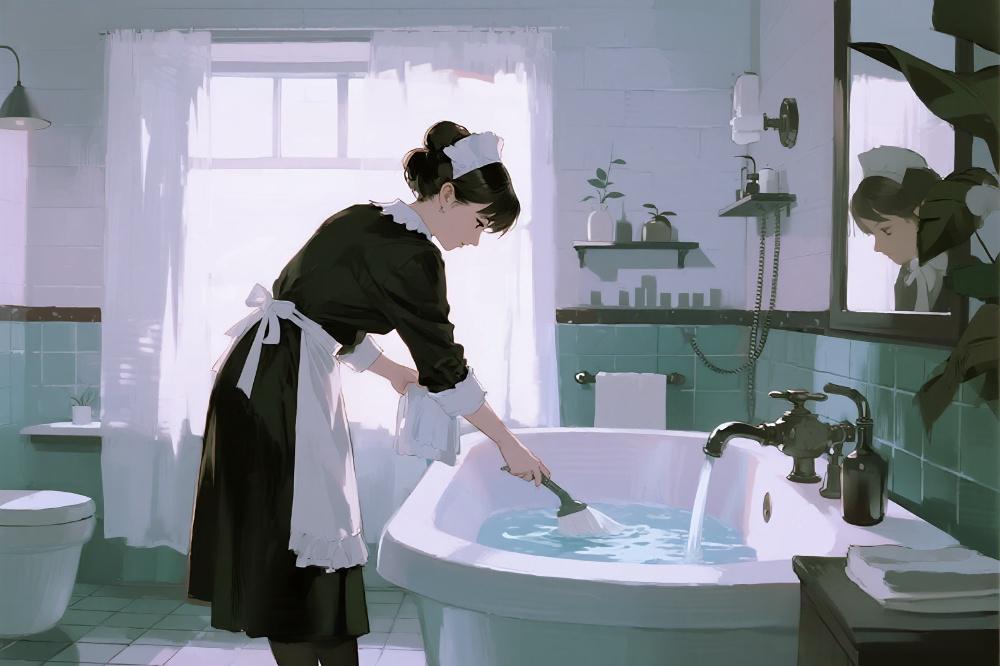
7. Drains & Floor Traps
Mid-frequency: Remove hair with tweezers. Clean with vinegar and baking soda, then flush with 80°C water.
Low-frequency: Pour in enzyme cleaner monthly to avoid clogs and odors.
Rust remover shower tip: If rust appears around metal drain covers, scrub gently with vinegar and a scouring pad.
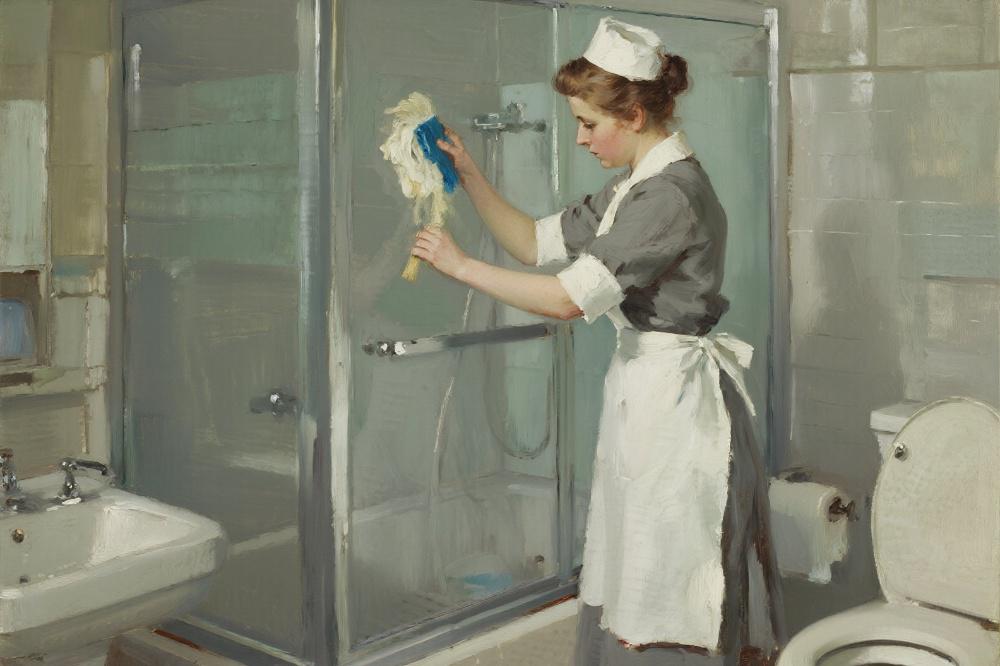
8. Floors & Corners
Mid-frequency: Mop with diluted bleach and a stiff brush. Focus on tile edges where rust and mold hide.
High-frequency: Run exhaust fans and squeegee after every shower—dampness invites both mold and rust in the shower.
9. Storage Cabinets & Shower Caddies
Low-frequency:
- How to remove rust from a shower caddy: Soak the caddy in vinegar for 30 minutes, scrub with a toothbrush or scouring pad, then rinse and dry completely.
For metal caddies:
- How to clean rust off a metal shower caddy
- How to get rust off a plastic shower caddy
- Use baking soda paste or specialized rust remover for showers for tough areas.
- Polish metal with a dry cloth to prevent future corrosion.
- High-frequency: Always dry shower caddies after use to reduce rust risk.
⏱️ Step 3: How to Schedule Cleaning Without Feeling Burned Out
Use this cleaning formula:
“Top to bottom, inside to outside”
- Start with ceilings and walls
- Spray first, wait, then scrub
- Always finish by rinsing floors and draining water
Sample routine:
- High-frequency (5 min/day): Wipe counters, squeegee glass, run fan
- Mid-frequency (30 min/week): Deep-clean toilets, floors, and remove rust stains from shower fixtures
- Low-frequency (2 hours/month): Tackle rusty shower corners, grout, and drain buildup in one go
⚠️ Safety First
- Wear gloves and a mask when using cleaners
- Never mix bleach (like 84) with acidic products (like vinegar or toilet cleaner)—toxic gas may form
- After cleaning, ventilate for at least 30 minutes to dry the air and stop rust and mold
